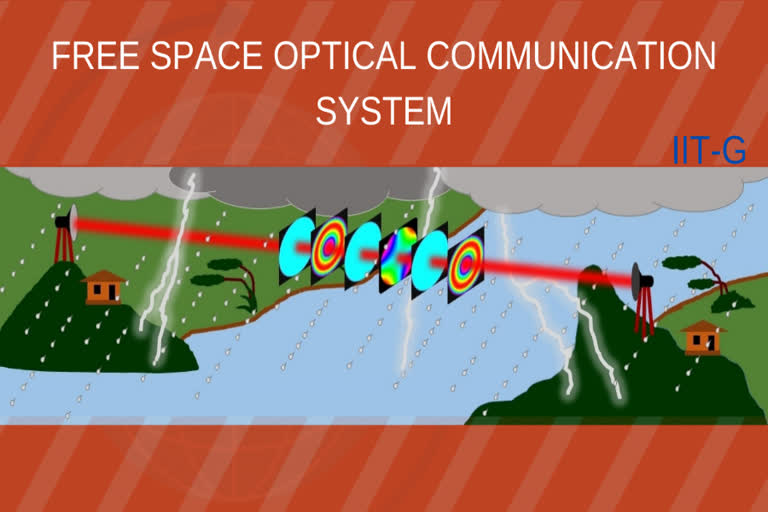Guwahati: The communication system can thus be used for high speed and secured communication between two individuals located either inside a building or outside, according to a study published in Communications Physics, a journal belonging to Nature Publishing Group.
The researchers said that the system is also insulated from hacking and interloping, making it more secure than wired and other conventional wireless forms of communication.
The research team was led by Bosanta Ranjan Boruah, Department of Physics, IIT Guwahati, and Santanu Konwar, presently an Assistant Professor at the Department of Physics, Abhayapuri College, Assam.
In free-space communication, data in the form of voice, text, or image is transmitted using light wirelessly rather than through optical fibers and it represents the next generation of communications technology.
The past couple of decades have seen phenomenal developments in free-space communication.
Most free-space communication systems developed so far all over the world use a type of light beam called the vortex beam to encode the data.
The problem is the use of a vortex beam is that it can be distorted by turbulence that may occur in the medium of propagation.
In effect, data transmitted wirelessly using light/laser beams can become corrupted when transmitted through atmospheric turbulence such as wind.
To overcome this problem, the IIT Guwahati researchers used orthogonal spatial light modes called Zernike modes to encode the data and to transmit the same robustly in the form of the phase profile of a laser beam.
"In our work, the transmission station modulates the phase profile of a laser beam that carries the data, in terms of the strengths of a few Zernike modes. In the process we also enhance the information content per modulation cycle of the laser beam," Boruah said in a statement.
At the point of reception, the laser beam with encoded user information is sensed by a specially designed wavefront sensor that decodes the user information.
In this communication system, a unique mechanism has been implemented that can compensate for the effect of atmospheric turbulence so that the user information can be transmitted even through a turbulent atmosphere resulting in negligible error at the receiving station.
"In addition to eliminating errors in communication, our system is also insulated from hacking and interloping," said Konwar.
"This is because the receiver decodes the transmitted beam by measuring the phase and not the power of the light beam, with prior knowledge about the strength and types of Zernike modes used, which make it more secure than wired and other conventional wireless forms of communication."
Furthermore, the transmission is directed strictly towards the receiver, unlike other wireless forms of communication in which the information is transmitted in all directions, adding to the security of the communication, said the study.
Also Read: Future-proof fruit
(Inputs from IANS)



